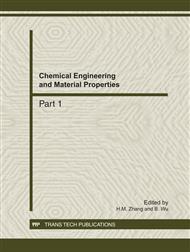[1]
I. Mir, D. Kumar: Int. J. Adhes. Adhes. Vol. 28 (2008), p.362.
Google Scholar
[2]
Y.L. Guan, X. Chen, F.Q. Li and H. Gao: Int. J. Adhes. Adhes. Vol. 30 (2010), p.80.
Google Scholar
[3]
H. Kim, J. Kim and J. Kim: Microelectron. Reliab. Vol. 50 (2010), p.258.
Google Scholar
[4]
K. Suganuma: Curr. Opin. Solid State Mater. Sci. Vol. 5 (2001), p.55.
Google Scholar
[5]
Y. Zhang, S.H. Qi, X.M. Wu and G.C. Duan: Synth. Met. Vol. 161 (2011), p.516.
Google Scholar
[6]
N.L. Liu, S.H. Qi, S.S. Li, X.M. Wu and L.M. Wu: Polym. Test. Vol. 30 (2011), p.390.
Google Scholar
[7]
Y. Li, K. Moon and C.P. Wong: Science. Vol. 308 (2005), p.1419.
Google Scholar
[8]
Y. Li and C.P. Wong: Mater. Sci. Eng. R. Vol. 51 (2006), p.1.
Google Scholar
[9]
C.T. Murray, R.L. Rudman, M.B. Sabade and A. V. Pocius: Mater. Res. Bull Vol. 28 (2006), p.449.
Google Scholar
[10]
E.P. Wood and K.L. Nimmo: J. Electron. Mater Vol. 23 (1994), p.8.
Google Scholar
[11]
S.L.C. Hsu and R.T. Wu: Mater. Lett. Vol. 61 (2007), p.3719.
Google Scholar
[12]
G. Jiang, M. Gilbert, D.J. Hitt, G.D. Wilcox and K. Balasubramanian: Composites A. Vol. 33 (2002), p.745.
Google Scholar
[13]
D. Lu, D. Wong and C.P. Wong: J. Electron. Manufact. Vol. 23 (2000), p.241.
Google Scholar
[14]
H.K. Kim and F.G. Shi: Microelectronics. J. Vol. 32 (2001), p.315.
Google Scholar
[15]
M. Kozlowski and A. Kozlowska: Macromol. Symp. Vol. 108 (1996), p.261.
Google Scholar
[16]
W.G. Weng, G.H. Chen, D.J. Wu, X.F. Chen, J.R. Lu and P.P. Wang: J. Polym. Sci. Pol. Phys. Vol. 42 (2004), p.2844.
Google Scholar
[17]
J.R. Lu, W.G. Weng, X.F. Chen, D.J. Wu, C.L. Wu and G.H. Chen: Adv. Funct. Mater. Vol. 15 (2005), p.1358.
Google Scholar
[18]
W. Lu, J.X. Weng, D.J. Wu, C.L. Wu and G.H. Chen: Mater. Manuf. Process. Vol. 21 (2006), p.167.
Google Scholar
[19]
L. Chen, G.H. Chen and L. Lu: Adv. Funct. Mater. Vol. 17 (2007), p.898.
Google Scholar
[20]
K. Kalaitzidou, H. Fukushima and L.T. Drzal: Compos. Sci. Technol. Vol. 67 (2007), p. (2045).
Google Scholar
[21]
N. Jovic, D. Dudic, A. Montone, M.V. Antisari, M. Mitric and V. Djokovic: Scripta. Mater. Vol. 58 (2008), p.846.
Google Scholar
[22]
S.Y. Qu and S.C. Wong: Compos. Sci. Technol. Vol. 67 (2007), p.231.
Google Scholar


